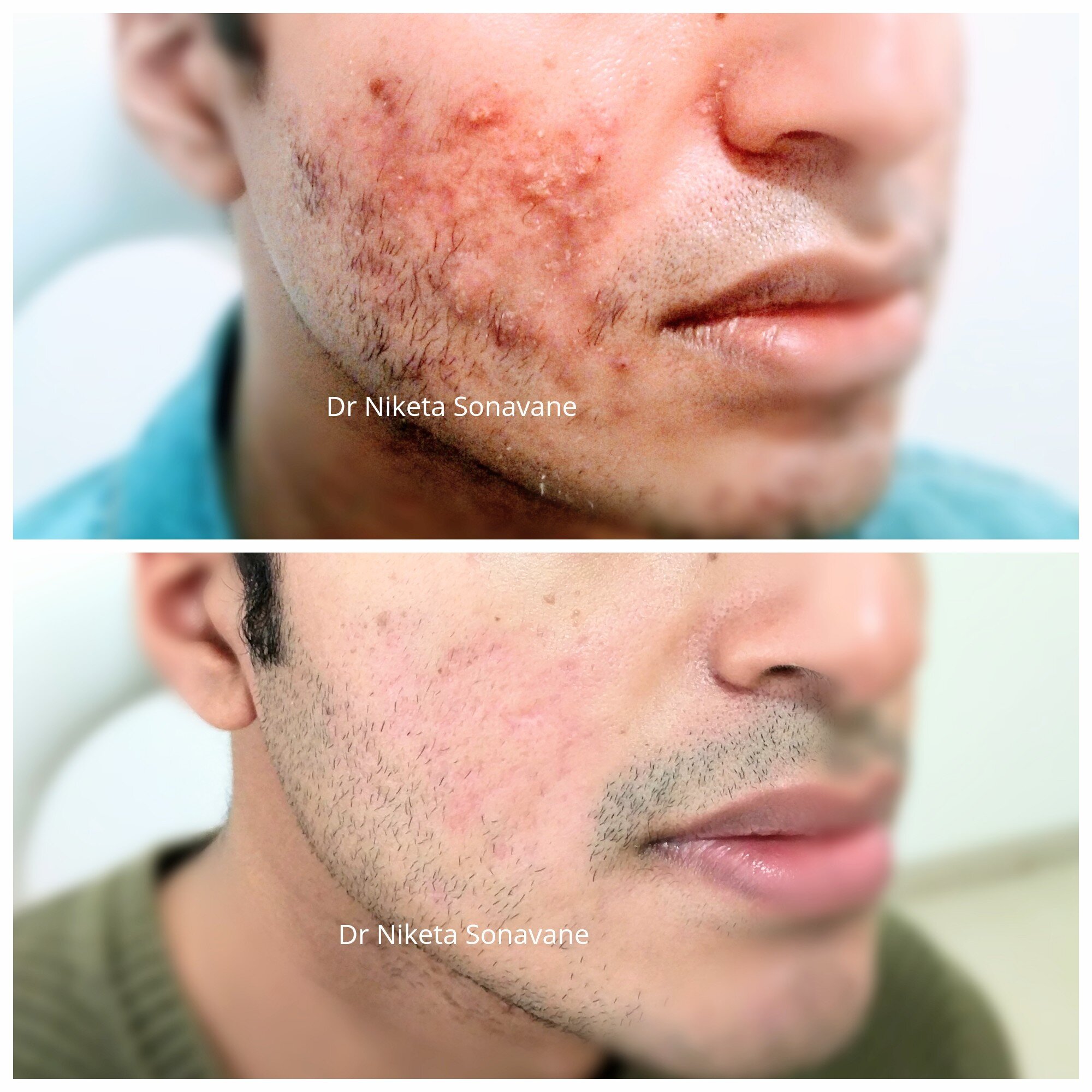Exploring Skin Disease: Dealing With and determining Acne Scars for Healthier Skin
Acne scars represent a considerable problem for people looking for to maintain healthy skin, as they can affect both appearance and self-confidence. Comprehending the different kinds of marks, from atrophic to hypertrophic, is crucial for determining appropriate treatment options. While professional interventions like chemical peels and microneedling can be effective, the importance of personalized care plans can not be overstated. Moreover, preventative measures play an important function in lessening future scarring. As we explore these facets, one must consider just how the right approach can result in transformative outcomes.
Recognizing Acne Scars

The body's all-natural recovery process can lead to either atrophic marks, which appear as anxieties in the skin, or hypertrophic marks, which are elevated and result from overproduction of collagen. Furthermore, the psychological toll of acne scars must not be underestimated; numerous individuals report sensations of shame, stress and anxiety, and reduced self-worth. This emotional problem can influence social communications and overall lifestyle.
Dealing with acne scars needs a thorough understanding of their formation and impact. Understanding of the possibility for lasting consequences connected with without treatment marks can encourage individuals to seek proper therapies. Early intervention and efficient administration techniques can considerably enhance skin appearance and improve mental durability, highlighting the significance of comprehending the complexities surrounding acne marks.
Kinds of Acne Marks
Acne marks can be classified into distinct types, each exhibiting unique characteristics and requiring specific treatment approaches. acne scars. The primary kinds of acne marks consist of atrophic, hypertrophic, and keloid marks

Hypertrophic scars, in contrast, are elevated above the skin level and are the result of too much collagen manufacturing during the recovery process. They typically continue to be within the limits of the initial acne sore. Keloid scars are comparable however extend past the original injury website, forming bigger, elevated areas that can be scratchy or unpleasant.
Understanding these sorts of marks is important for picking appropriate therapy alternatives. Different marks might respond much better to details therapies, such as laser therapies, fillers, or surgical treatments, description emphasizing the relevance of a tailored method to acne mark monitoring.
Determining Your Scars
Acne marks generally fall right into 2 categories: atrophic and hypertrophic marks. These can better be classified into ice-pick marks, boxcar marks, and rolling marks, each exhibiting distinct features and needing various approaches for analysis.
Hypertrophic scars, on the other hand, are increased and happen as a result of extreme collagen manufacturing throughout the healing procedure. Recognizing the certain attributes of your marks-- such as size, structure, and depth-- is essential for useful site proper identification (acne treatment for sensitive skin). Furthermore, think about the distribution of scars across your skin, as this can indicate the severity and period of the acne problem
Involving with a skin doctor can provide valuable insights right into the nature of your marks, helping in the differentiation between various types. A comprehensive understanding of your scars will ultimately result in a more tailored and effective therapy strategy, making certain a more clear and much healthier skin.
Therapy Options Available
Identifying the particular sort of acne marks existing on your skin prepares for exploring effective therapy alternatives. Typical kinds of acne marks consist of atrophic (clinically depressed), hypertrophic (elevated), and post-inflammatory erythema.
For atrophic marks, choices such as chemical peels, microneedling, and laser resurfacing are commonly made use of. Chemical peels use acids to eliminate the outer layer of skin, promoting new cell development. Microneedling involves little needles that develop micro-injuries, promoting collagen production. Laser resurfacing targets harmed skin cells, enhancing structure and tone.
Hypertrophic marks can be treated with corticosteroid injections to flatten the mark or laser treatment to minimize redness and boost appearance. Silicone gel sheets and stress dressings may additionally assist in taking care of increased marks.
Furthermore, facial additional resources fillers can briefly fill out anxieties from atrophic marks, while surgical excision might be appropriate for extreme cases. Each treatment alternative has its considerations and advantages, making it important to seek advice from with a dermatologist. They can supply personalized suggestions based upon the type and intensity of your marks, in addition to your skin kind and overall wellness.
Tips for Prevention
Reliable avoidance approaches can significantly reduce the likelihood of developing acne marks. Making use of non-comedogenic items assists stop stopped up pores, which can worsen acne.
Staying clear of need to choose or pop acne sores is crucial, as this can lead to much deeper skin damages and boost the danger of scarring. Instead, consider making use of a chilly compress or non-prescription therapies to decrease swelling and redness.
Sun defense is one more important aspect of avoidance; ultraviolet (UV) rays can dim marks and impede the healing process. Using a broad-spectrum sun block with at least SPF 30 daily can protect the skin and advertise also healing.
Finally, preserving a balanced diet regimen abundant in vitamins, anti-oxidants, and minerals supports skin wellness and recovery. Remaining hydrated and managing stress and anxiety degrees can additionally play a considerable role in decreasing acne flare-ups. By executing these techniques, people can dramatically decrease their opportunities of creating acne scars.
Final Thought
In final thought, understanding and recognizing acne scars is vital for reliable treatment and attaining much healthier skin. Various kinds of acne marks, including hypertrophic and atrophic marks, demand particular interventions customized to individual requirements.
The body's all-natural healing process can result in either atrophic marks, which appear as anxieties in the skin, or hypertrophic marks, which are elevated and result from overproduction of collagen. They are additional split right into 3 subtypes: ice pick marks, boxcar scars, and rolling marks. Acne scars generally fall right into two categories: atrophic and hypertrophic marks. These can further be identified into ice-pick marks, boxcar scars, and rolling scars, each exhibiting distinctive characteristics and calling for different techniques for evaluation.
Different types of acne marks, consisting of hypertrophic and atrophic scars, necessitate specific interventions customized to specific requirements.